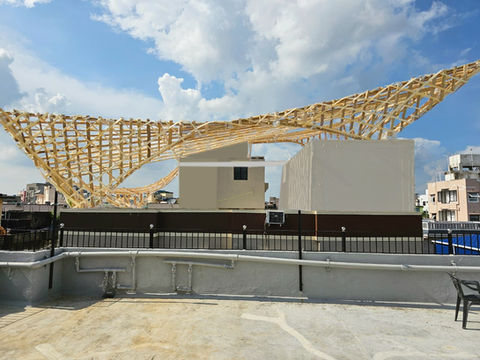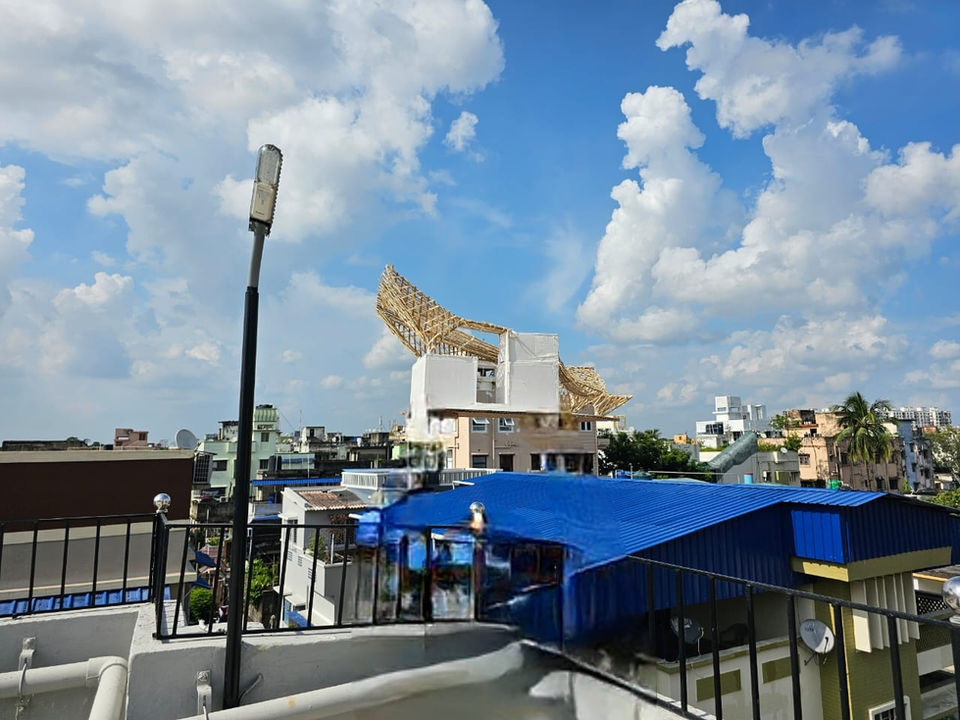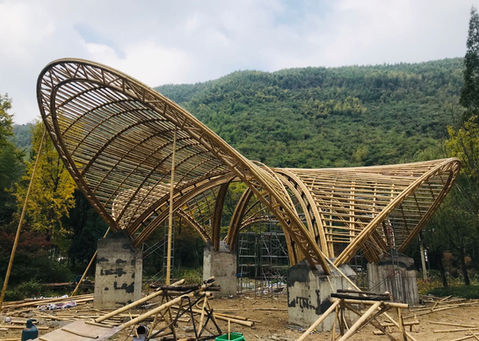
Give Me 7 Minutes, And I´ll Show You Step-By-Step
How to Create Bamboo Architecture that Attracts Funding!
Regardless of your age or country
WHAT YOU WILL LEARN
✅ How to turn ideas into solid bamboo concepts that attract funding.
✅ How to overcome the belief that “this won’t work in my country.”
✅ How to receive global feedback to immediately improve your projects.

Join me and the top 1% of risk-takers in the emergent world of bamboo architecture

This Masterclass is only for the risk-takers, pioneers, & visionary creators
Check their bamboo architecture projects designed with the principles inside this webinar.

Flor Schmidt
Argentinian architect, founder of Wavy Pop-Up studio. She creates inspiring outdoor structures using popular architecture and craftsmanship combined with parametric design, and other digital tools. Featured: "1:1 Pavilion" (Argentina, 2024).

Beatrice Monnerie
Founder of Monnerie Atelier. French designer & craftswoman who creates artistic architectural structures in the European urban environment for real estate developers that are spreading the message of sustainability in tomorrow's construction. Bamboo structural concept sample: "Powerful Stars" (France, 2023).

Udit Mittal
Indian architect and co-founder of QX Studio, who brings feasibility to the roof improvement of existing residential buildings for growing families in India. Bamboo structural concept sample: "Samaa" (India, 2023)

Overview results that used the ideas inside this Masterclass
Discover the top creatives from around the world creating work that matters for people who cares
This Masterclass is for you if you are opening market for your bamboo architecture in your own country
PROFESSIONAL BACKGROUND & SKILLS
-
You are a designer and/or business person/company.
-
You are a pioneer, & rebel.
-
You have a robust ecology background.
QUALIFICATIONS & CONFIDENCE
-
Maybe you are not an architect but confident in understanding construction.
-
Access to regenerative material resources like bamboo or timber.
-
You already have training experience of +3 years in related topics.
CAREER ASPIRATIONS & COMMITMENTS
-
Noticed the market demand for ephemeral, artistic architecture.
-
Already identified potential clients and don't want to lose their support.
-
You are starting a new professional career in regenerative architecture.
The six core values of this Masterclass
The spirit of it.

1. Feedback Culture
We provide a supportive environment for receiving and giving feedback, enhancing collaboration and growth within our community.
2. Heart-led Precision
The methods of this Masterclass are guided by passion but executed with meticulous attention to detail, ensuring excellence in every endeavor.


3. Rural to urban, urban to rural
This Masterclass also aims to "ruralize" urban landscapes and "modernize" rural areas, adapting to local conditions without imitating the tradition.
4. Craftsmanship > ( Digital + AI )
The ideas of this Masterclass prioritize handmade craftsmanship while embracing the power of digital tools and AI to push the boundaries of design.


5. Commitment to regenerative materials
We are dedicated to using sustainable materials like bamboo, wood, and/or earth, contributing to the resilience of our built environment.
6. Interaction with the market
We believe in testing designs in real-world markets, ensuring their viability and relevance in today's dynamic landscape.

Create architecture first. The industry will follow.
Materialize bamboo concepts it in the market conditions

This Masterclass Is Not for Beginners
This opportunity is exclusively for highly motivated international creatives with robust experience and/or who are committed to positioning their innovative bamboo architecture in local markets. They have already completed online and/or in-person courses or training from leading bamboo education centers and independent experts.
If you're just starting out, I recommend beginning with my Ph.D. dissertation, available for free, titled "Research on Reducing Homogeneity of Raw Bamboo Buildings Based on Material Tectonics and Craft Technology". When you're ready watch the Masterclass.

In this Masterclass we care about 3 things
1) Define the intentions. 2) Translate those intentions into the real scale of your project. 3) Interact with the market.
#1
Intention
Here you define the intentions of your projects without a sense of scale. 3 Things to care about:
-
Observation (site, requirement, study cases).
-
Formulation (Mind-map, architectural program, name)
-
Physicality (light, materials, ergonomics)
#2
Scale
Here you take those intentions into the real scale of your project.
3 Things to define:
-
Scale structural model
-
Construction logic
-
Joinery
#3
Market
You will present the project to your client/investor and attract financial support for the further development.
-
Attract investment.
-
Minimum viable service.
-
Compete by value, not price.

































